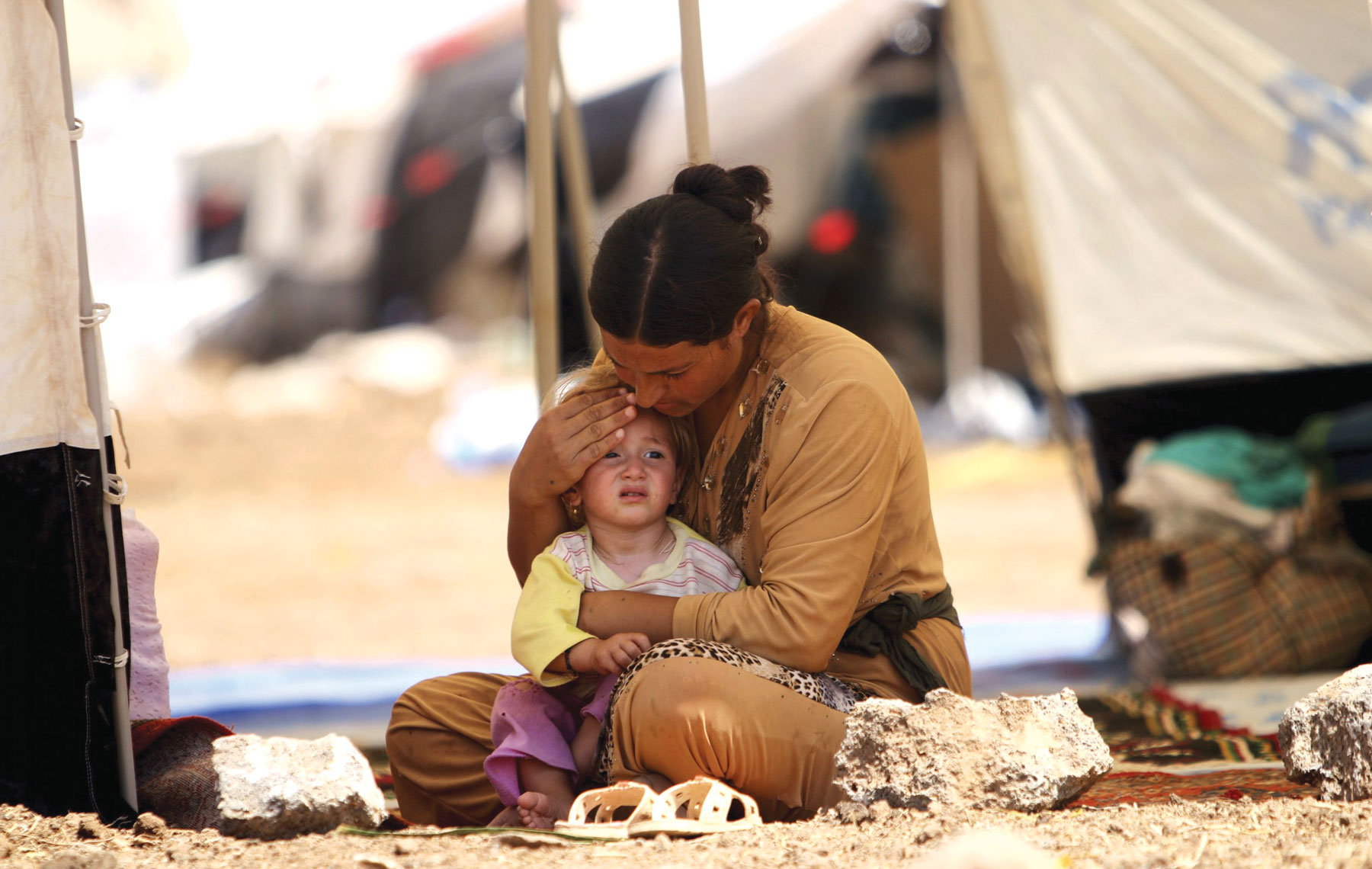 A refugee Yazidi woman with a child inside a tent at Nowruz refugee camp in Qamishli, northeastern Syria.
Photo by Rodi Said/Reuters
A refugee Yazidi woman with a child inside a tent at Nowruz refugee camp in Qamishli, northeastern Syria.
Photo by Rodi Said/Reuters Five years ago, the images that filled our television news screens were of the horrific executions perpetrated by the Islamic State (ISIS) against the Yazidis — a Kurdish minority living in northern Iraq — as ISIS sought to create a caliphate in the region.
However, at the height of the Yazidi genocide in August 2014, when thousands of men were massacred, ISIS also captured thousands more Yazidi women and children and sold them into sexual slavery. Some managed to escape and some were eventually released. But all bear scars — some physical, some psychological, some both — of their time spent in brutal captivity where they were subject to rape, beatings and torture.
Today, as ISIS’s stronghold wanes, much of the world has forgotten about the plight of the Yazidi people and in particular the women and children (many of whom were born after their mothers were raped by ISIS fighters), who are attempting to rebuild their lives, mostly in northern Iraqi refugee camps.
However, there is one country — Israel — that has never forgotten. Over the past four years, Bar-Ilan University researchers have been working with an international team, undertaking studies among the women who were held captive by ISIS and trying to find ways to help them.
That work culminated in an extraordinary project last month in Israel, where 16 lay, female Yazidi mental health workers were brought from Iraq to Bar-Ilan, thanks to a fundraising effort by the American Friends of Bar-Ilan University (AFBIU) in Los Angeles, and international coordination efforts, including help from IsraAID. The women spent two weeks undertaking professional training in order to return home and offer support for the women who continue to struggle with their trauma.
The entire project was a significant undertaking and required almost two years of coordination, finding donors to fund the $200,000 venture, enlisting a renowned humanitarian aid Iraqi doctor, and bringing in some of the world’s experts on complex post-traumatic stress disorder (CPTSD).
“It was important to bring mental health workers from Iraq to Israel to give them the best training possible.”
The project was the brainchild of clinical psychologist Yaakov Hoffman, a senior lecturer in the Interdisciplinary Department of Social Sciences at Bar-Ilan, and Ari Zivotofsky, an engineer and professor in Bar-Ilan’s Gonda Brain Science program.
How the project unfolded was serendipitous, Hoffman said, speaking from Israel. He explained that the American-born Zivotofsky went to Kurdistan four years ago to research remnants of the Jewish community there. “He’s interested in that aside from being a neuroscientist,” Hoffman explained.
“It’s true,” Zivotofsky said, also speaking from Israel. “I originally went to Kurdistan with a friend because we like to visit disappearing Jewish communities. We heard there was still a small community left — there was a large Jewish community in the ’50s and ’60s — and we wanted to see what was there.”
So Hoffman, figuring Zivotofsky would pass by some of the post-ISIS camps with these women said, “Let me print up a questionnaire. I’ll do it in English, and see if you can hand them out.”
While Zivotofsky was unable to get near the camps, through a series of connections, he was able to connect with Dr. Mirza Dinnayi, a Yazidi activist and humanitarian who lives part time in Germany and who personally rescued more than 1,000 Yazidi women from ISIS and brought them to Germany — including 2016 joint Sakharov Prize winner Lamiya Aji Bashar. Aji Bashar was captured by ISIS when she was just 15. She shared the European Union Sakharov Prize for Freedom of Thought with another Yazidi woman, Nadia Murad. Murad subsequently went on to win the Nobel Peace Prize in 2018.
With Dinnayi’s help, and a grant from the Research Center for the Middle East and Islam, Hoffman and Zivotofsky spent four years studying women who had been held by ISIS. The results of that paper were published in February 2018, and revealed that 50% of the women were suffering from CPTSD while 23% were suffering from standard PTSD.
“Complex PTSD is relatively new,” Hoffman explained. “It only came out as a formal diagnosis in 2011 so a lot of clinical psychologists don’t yet know about it enough.” At its most basic, Hoffman said, CPTSD occurs when the trauma is very prolonged. “And it’s characterized by a second type of feature that is fascinating because it’s never really been investigated — where one’s destiny is under another’s control.”
But even though Hoffman is a clinical psychologist who researches PTSD, what drew him to want to work and study with the Yazidi women in particular?
“There is one country – Israel – that has never forgotten.“
“Those pictures coming out of Iraq [at the time]. This was really echoing things from our [Jewish] past,” he said. “Some of those pictures were horrifying. I’m not just talking about the executions. These female ISIS captives, kept in captivity for two or three years witnessed tremendous horrors.” The basic motivation, Hoffman said, was not just to give voice to their plight but also because most of the nongovernmental organizations (NGOs) on the ground don’t have the research or expertise to help these women. That’s why, he said, it was important to bring mental health workers from Iraq to Israel to give them the best training possible.
Aside from the logistical issues that prevent Israelis from entering Iraq (Iraq is officially at war with Israel), “We also couldn’t just go into some place that had a genocide and say, ‘We’ll do some games, empower them, and in the best case scenario, we’ll give them an intervention for PTSD, without checking if they’re suffering from PTSD or complex PTSD or depression or insomnia,’” Hoffman said.
With standard PTSD, Hoffman explained, you expose people to things they are afraid of. “Exposure is a common therapy,” he said. “But if you take someone with complex PTSD, it has all the symptoms of PTSD but goes far deeper — including a disrupted self-organization where their whole self is actually uprooted. And if you give them exposure therapy before they’re strong enough, you might actually be doing more damage.”
And so, in creating the program, Hoffman and Zivotofsky reached out to world-renowned expert on CPTSD, Marylene Cloitre, clinical professor of psychiatry at Stanford University and associate director of research at the National Center for PTSD Dissemination at the Veterans Affairs Palo Alto Health Care System. Cloitre, together with the World Health Organization (WHO) had recently developed the diagnosis for CPTSD.
“We contacted her because we wanted her to address the women,” Hoffman said. “And the story of how we got [Cloitre] here is beshert,” he said. “Did she tell you the story?”
She did.
Speaking with Cloitre in Northern California, she explained how she had never been to Israel. After completing her latest project with the WHO, she was trying to figure out what to do next.
“I thought, what I’d really like to do next is go to Israel. It’s a country that has experienced so much trauma and has persevered, it just felt like I should know more,” she said. A week later, she received an email from Hoffman asking her to come to teach the Yazidi women at Bar-Ilan. “It didn’t take me long to say ‘yes,’ ” Cloitre said.
“I work with women. I recalled the attacks on the Yazidi women and I was really shocked by how little the U.S. did and I felt very bad about it. Those things were on my mind when I got the email from Yaakov.”
Hoffman said it was clear his and Cloitre’s goals were aligned. “Our goal wasn’t just to train the women,” he said. “We also wanted to raise the plight of the Yazidis because, to some extent, it’s not being acknowledged enough by the world. Even Israel hasn’t yet acknowledged there was a Yazidi genocide. That’s why it meant a lot to bring someone like Lamiya [Aji Bashar], who could be interviewed and raise awareness. She’s also someone whose face can be shown. She’s a spokeswoman for Yazidi suffering.”
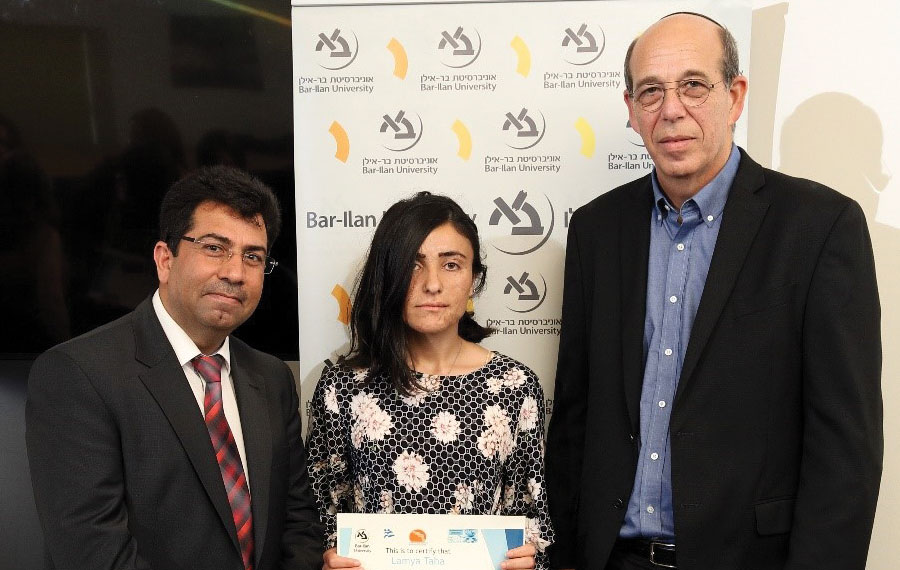
That Aji Bashar came to Israel at all is thanks to the work of Dinnayi, Zivotofsky added. “While ISIS was massacring people, Mirza was going to Israel and Germany looking for help. Unfortunately, most of the Western world doesn’t seem to be interested except for Germany. [Germany] is doing teshuvah. They understand what genocide is and they want to repent. It’s putting their money where their mouth is and they have given a lot of money to help these people in both Kurdistan and Germany.”
But the Bar-Ilan program could not have happened without funding, which was coordinated by Ron Solomon, the executive vice president of AFBIU in Los Angeles. Speaking over lunch in Los Angeles with Solomon, one of those donors, local Los Angeles philanthropist Alan Gindi, spoke about how he was quick to come on board, as was his mother, Rachel Gindi.
“Often, the kinds of events that lead to complex PTSD are violent and are repeated. People’s bodies just take a big hit and they’re not comfortable in their own bodies and we work on that first.”
— Marylene Cloitre
“Bar-Ilan University and IsraAID are two organizations I respect very much and I know them both pretty well,” Gindi said. “I told Ron, ‘If my mother’s interested in doing this, so am I.’ ”
“I was under a lot of pressure to get this program funded,” Solomon said, “and I thought it was a fantastic program and [Rachel Gindi] is the champion of the underdog.”
Gindi revealed how he’d met some Yazidi survivors who had come to Los Angeles a couple of years ago. “I remember them sitting in my living room and telling their terrible stories. They desperately needed help. [Doing this project] is a Kiddush HaShem at the highest level.”
It was the Gindis — Rachel, Alan (and his wife, Barbara) — the Hitter Family Foundation and Alan Zekelman who footed the majority of the bill. All of the Bar-Ilan faculty volunteered their time and their expertise for the workshops.
“We had a video conference call with the attendees and Mirza, Zivotofsky and Hoffman. It was really something very special,” Gindi said.
“Over the years, [AFBIU] has raised funds for 12 buildings on the campus but I consider this one of the most meaningful donations because of what this is going to,” Solomon said.
With funding in place, Cloitre prepared for the program by reading about the Yazidis and their experiences and also spoke with a Yazidi psychiatrist via Skype about her proposed training. “He said my plan was fine but I didn’t know what to expect,” Cloitre said, adding she wasn’t even sure what the women’s religion was. And while there were four Muslim and two Christian women in the group, everyone else was Yazidi. “I had to get an education,” Cloitre said. “The Yazidi are their own people, their own religion. I was prepared to be very conservative in my dress but I saw they don’t dress very differently than the way we do. The weren’t wearing burqas.”
It was Hoffman’s idea, Cloitre said, to train lay people to understand more about trauma and CPTSD, including how to talk to people with PTSD and provide simple intervention that might help resolve some of the most impairing symptoms.
It was necessity, though, that dictated that the women selected were lay people. That’s because there are so few professional mental health workers in Iraq. It was Dinnayi and his organization Air Bridge Iraq, together with IsraAID — which has been working in refugee camps in northern Iraq for many years — that found the women. Dinnayi accompanied the women, including Aji Bashar, on their circuitous journey to Israel via Turkey.
A week after the program ended, Dinnayi suffered a heart attack. He spoke with the Journal three weeks later from a rehabilitation hospital in Germany where he was recuperating and said he was on the road to recovery.
In the period leading up to the project, Dinnayi said, “I explained to Ari and Yaakov about the situation in Kurdistan and how there are very few people who know how to treat PTSD. There is one psychotherapist for every 250,000 people in Iraq.” However, the women he selected had mostly worked in refugee camps.
Air Bridge Iraq, Dinnayi’s charity that assists trauma victims, has implemented several training programs, worked with many Yazidi women, and has helped resettle many victims in Germany. “I found [the 16] women who were willing to make the journey [to Israel] because they trust me,” he said. “If Bar-Ilan could offer a course of treatment for these women to work with victims of PTSD, that’s [a good thing],” he said, because “the whole Iraqi community is traumatized.”
Dinnayi, who has done humanitarian work with Israel for almost 15 years, said, “I think it’s very important to start some kind of relationship with [Iraq and Israel]. I’m not speaking about the politics,” he explained. “I’m speaking about the social relationships. I have many Jewish friends. They are like my family. Especially the Iraqi Jews in Israel. My life is about making peace and, if you want to have peace in the Middle East, it’s crucial to break stereotypes and you have to bring everyone together.”
And it’s stereotypes, he said, that have much to do with the fact that there are so few psychologists and psychotherapists in Iraq. “Even though Iraq has had many wars, people are ashamed to seek mental health treatment because of the stigma associated with it,” he said, adding that if someone were to seek mental health treatment, they would be called “mad” or “crazy.”
“That’s because there’s very bad education about psychological diseases,” he explained. “They don’t know it’s the same as any [physical] disease and should be treated the same way.” As a result, he said, few doctors study psychotherapy or psychiatry lest they, too, be called crazy. “The stigma is very bad,” he said. “And we have no special department for trauma.”

Which is why, Hoffman said, bringing in these lay, Iraqi women was crucial. And that required a massive coordination effort with the Israeli Foreign Ministry and Dinnayi to bring the women into Israel via Turkey with special visas. The whole project almost didn’t happen. Two women received threats from the Iraqi government and pulled out. One woman got stuck in Turkey after having problems with her visa and eventually arrived a few days into the program. There was a glitch with the visas that saw the majority of the women having to receive them at the eleventh hour at the airport in Turkey. “We were on shpilkes up until the last minute,” Hoffman said. “We had no idea if they were coming.”
“It took a huge amount of work,” Zivotofsky added. “And beyond the treatment we also wanted to do PR. We wanted to not only help [the Yazidi women] but also bring to the world’s attention the plight of the Yazidis.”
That PR exercise — which brought CNN to cover the program — was thanks to Dinnaye bringing Aji Bashar. Zivotofsky reached out to Jewish Agency Chairman and former Soviet prisoner Natan Sharansky, who was imprisoned with Soviet dissident and activist Andrei Sakharov. As a result, Sharansky participated in the workshop’s closing event, where Aji Bashar spoke.
“If it wasn’t for IsraAID, their work in the camps and Mirza we wouldn’t have been able to get Lamiya,” Zivotofsky said. IsraAID also brought Murad to Israel two years ago. “And,” he added, “We really wanted Sharansky to be part of this. Twenty years ago, we would have brought Elie Wiesel — someone who represents an apolitical moral compass. Sharansky is viewed by many today as a neutral, moral voice.”
Also crucial, Hoffman said, was getting Cloitre for the first week of the two-week program to implement a treatment she had created called STAIR (Skills Training in Affective and Interpersonal Regulation). “It focuses on helping people reduce the intensity of their emotional reactions post trauma,” Cloitre said, “and also, very importantly, helps people reconnect to their social networks.”
“[Germany] is doing teshuvah. They understand what genocide is and they want to repent. It’s putting their money where their mouth is and they have given a lot of money to help these people in both Kurdistan and Germany.” — Ari Zivotofsky
Expanding on how PTSD differs from CPTSD, Cloitre said PTSD is viewed around having symptoms of the event in the here and now; nightmares, avoidance of things that remind you of the event; certain sounds. The treatment includes confronting the trauma and talking about it; telling a narrative of what happened.
However, in CPTSD, Cloitre said, people have those symptoms, along with difficulty regulating their emotions and managing their feelings; a really negative sense of self-worth that comes from being tortured or being held captive for a long time; and very negative or challenging relationships. “There’s an interpersonal dimension, which is difficulty maintaining relationships — tending to avoid them,” she said. “Often, the kinds of events that lead to complex PTSD are violent and are repeated. People’s bodies just take a big hit and they’re not comfortable in their own bodies and we work on that first.”
Cloitre spent six days teaching her workshop. “We worked collaboratively to adapt the interventions to their populations so that they would be comfortable delivering it,” she said. “It was really inspiring to work with people who had been exposed to such intense trauma [and to be able to] work on a recovery plan.”
It wasn’t all smooth sailing, though. As both Cloitre and Hoffman noted, they had to adapt some of the treatment on the fly. Cloitre’s short interventions consisted of six sessions — one per day. But first, she said, “I had to make sure that each basic principle made sense in their culture.”
One example Cloitre gave was that a key intervention for reducing intense emotional reactivity and regulating your emotions is to find self-soothing. “What soothes you to get you back down to a place where you can function?” she said. And while everyone was on board with soothing the senses, “some of the things we use in Western culture weren’t appropriate. In this case, we spoke about the idea of using lavender but that wasn’t appropriate. Rather, they talked about the scent of soil after rain.”
Hoffman offered another example, citing that one way to regulate your emotions is to imagine a wave, and to let the wave roll over you. “Except it doesn’t work for [these women] because there’s no ocean where they live. They don’t know what a wave is. For many of them, the first time they visited a beach was in Israel.”
One of the greatest concerns, Cloitre said, was the high incidence of suicidal ideation in the population. “A lot of intervention for suicidality is cognitive,” she said. “It’s a reappraisal of values and identifying a reason to go on.”
In speaking with the women, Cloitre learned that in Yazidiism, you don’t have the right to kill yourself — only God can make that decision — and so there’s a reason you’re still alive. She also learned that there’s a very strong emphasis on the need to persevere for your people and your family.
“I found that very interesting, and they brought up some role model women — including Lamiya and Nadia Murad — who had been tortured but had escaped and were now being represented and sending a message through the U.N.”
Bringing Aji Bashar to participate in the program, “she became the voice of the voiceless women,” Dinnaye said.
The entire two-week program was a learning period with many challenges for everyone, Hoffman said. “There’s a lot of nuance to be aware of when working with these women,” he said. “For example, a woman who was raped as a prisoner won’t say ‘I was raped.’ She’ll say ‘my stomach hurts.’ ”
Another problem they encountered, Hoffman said was that the plan was for all participants to be able to speak English. “That didn’t happen. We had four women who didn’t speak English but Mirza translated for us.”
The women also came from diverse backgrounds, including one who was an engineer who planned the infrastructure for the post-ISIS camps and gradually started talking to the women. “They became mental health professionals because their people were suffering,” he said. “They felt this moral obligation to go out there and help.
“However, the diversity of the women who shared different stories from the field allowed the team to build a fictitious case study out of all their vignettes,” Hoffman said. “The plan is to create a manual from these stories so that when this fictional woman who came back from ISIS says this and she feels this, we, in response, can say this or that and offer her intervention.”
Along with Cloitre’s STAIR therapy, participants also studied how to deal with sleep issues, nightmares and insomnia, “which can be dangerous because if you leave them untreated, it can cause physical problems — metabolic syndrome and other nasty stuff,” Hoffman said. “So we want to get them back sleeping.”
On the plus side, Cloitre said she was surprised to learn that almost everyone has Androids or iPhones. “So ironically, what was shared across the two cultures was a technology-supported intervention, such as looking at photos of loved ones on their phones. I didn’t expect that.”
Zivotofsky said while the women traveled around Israel, they also took lots of photos of everything. “I was surprised by how enthusiastic they were about everything,” he said. “All the women were going around snapping pictures of everything with their phones: the flowers, the trees.”
The women did indeed go on tours around the country. Hoffman and Zivotofsky made sure they weren’t stuck in the classroom for the entire two weeks. “They had tiyulim (tours), they went to the shuk in Jerusalem and even to Friday night Shabbat meals hosted by residents in the Old City of Jerusalem,” Hoffman said. Zivotofsky was in charge of coordinating the trips around the country, which also included a visit to Haifa in the north of the country, where they visited the Baha’i temple.
The two Christians in the group, Zivotofsky said, knew about the holy sites in Jerusalem. “Most of the others knew very little about Jews. One of the speakers [in class] used the word Auschwitz. We think everyone knows what Auschwitz means. They had no idea.” He added that they knew a little bit about Jews because of the once sizable Jewish community and there are still echoes of it.
“One of the women said her mother’s best friend growing up had been Jewish,” Zivotofsky said, “and another told us there are Jews living in the village married to non-Jews. But they had positive feelings about Israel. They loved that they could go into a café and speak Arabic. They met the Baha’is and the Druze — and they were impressed about how we have these minorities living freely in the country.”
The highlight for many, though, Zivotofsky said, was having Shabbat dinner with Jewish families in the Old City. “They were intrigued by the fact that Jews opened their houses and were willing to share their family, food and beliefs with Iraqi non-Jews.”
The evening was not without incident, though, Hoffman said. “They were stoned in the Old City by people who thought they were Jews. But then Mirza walked up to one of the guys, took a photo of him, and started talking to him in Arabic. When I asked what he said to the man, Mirza said, ‘I know who you are and I’m going to find you.’ Suddenly, the place emptied out,” Hoffman said, laughing.
One of the most intriguing decisions made by Zivotofsky was to take the women to Israel’s Holocaust memorial — Yad Vashem. Hoffman said he thought Zivotofsky was crazy. “I thought he’d fallen on his head,” he said, laughing. “I said to him, ‘What do they need to see Yad Vashem for?’ But then I realized it was the most amazing thing, because first of all, it validated them. They saw they’re not the only ones who have suffered. And the way Yad Vashem is documented and archived, they were in total awe of how you can rebuild and get hope and can resume life afterward.”
That, said Hoffman, became the program’s mantra: “Visiting Yad Vashem wasn’t just an extracurricular activity. It tied into the whole theme of empowerment, rebuilding; of post-traumatic growth, which is something we were trying to imbue.”
The visit, Zivotofsky added, helped the women look up to Israel and the Jewish people. “We are a people who have been where they have been, just 75 years ago. They wanted to understand how we have commemorated our Holocaust and they wanted to understand how we have built ourselves up.”
“There’s a lot of nuance to be aware of when working with these women. For example, a woman who was raped as a prisoner won’t say ‘I was raped.’ She’ll say ‘my stomach hurts.’ ” — Yaakov Hoffman
However, Zivotofksy was quick to point out, “We’re not comparing tragedies or genocides. We have our story and they have their story. Once they understood that, it was important for them to see how they can rebuild.”
It was also Dinnayi, Zivotofsky said, who pointed out to the women how every building has a donor’s name on it. “He said to them, ‘Look, this is how a nation builds themselves up. They don’t rely on the government.’ [Dinnayi] viewed it as something that can be a lesson to the Yazidi people.”
Beyond the Jewish and Yazidi people’s shared tragedies, Cloitre also spoke about how Israel also can speak to intergenerational trauma, something the Bar-Ilan program is hoping to halt, by sending home these women with tools to help their traumatized population.
“It’s very different from the U.S.,” Cloitre said. “In Israel and in other older countries, there is a feeling and awareness of intergenerational transmission of trauma. In the U.S., the Civil War doesn’t weigh too heavy on most of us. That’s very different in Israel and it’s a very salient part of understanding trauma — of what’s happened in the past and how it’s transmitted through stories by grandparents and parents.”
To that end, Hoffman and Zivotofsky hope to be able to raise more funds to continue the program. The women returned to northern Iraq just a few weeks ago, so there is still a waiting period before there can be any clinical follow up. In addition, Dinnayi’s recent heart attack has delayed his return to Iraq although he says he plans to return in early September, funds permitting. He added that online supervision and training of the women is already underway, “and we will try to establish something sustainable.”
“Two weeks of training doesn’t make one an expert,” Zivotofsky said. “If we can get funding and continue the training, that would be fantastic.”
“Our goal together is to continue the work and we do have a plan for having monthly supervision with the women who were trained on how it’s going and trying to document with them how often they give the treatment and what their perception of its benefits are,” Hoffman said. “If that works, then I think the next step is to try and get more money to do a more systematic assessment of the benefits.”
Beyond the ongoing training and treatment for these women, Dinnayi said he hopes this work might lead to coexistence between Israel and Iraq.
“I encourage all Iraqis and Israelis to have good relationships with each other,” he said. “There is no ground for hatred. Especially in Iraq. It’s so stupid to have hatred based on nothing. This Islamic fundamentalism and this pan-Arabic Nazi ideology — we don’t need that. The Jews have the right to be peaceful in their own country.”
Unfortunately, he added, the Iraqi people “have been brainwashed for 40 years by the Ba’ath party, the Ba’ath regime and Saddam Hussein. The whole era of Saddam was hatred. We have to work for peace; for coexistence among communities — and the political disputes can be solved later.”
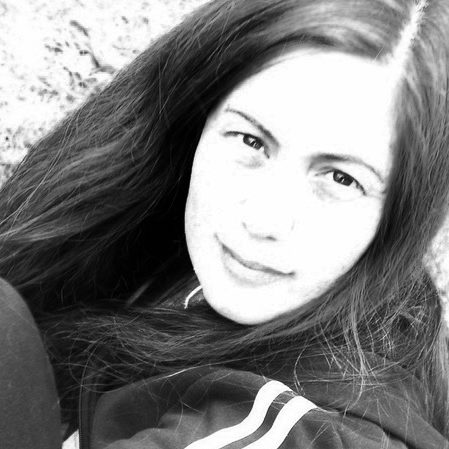







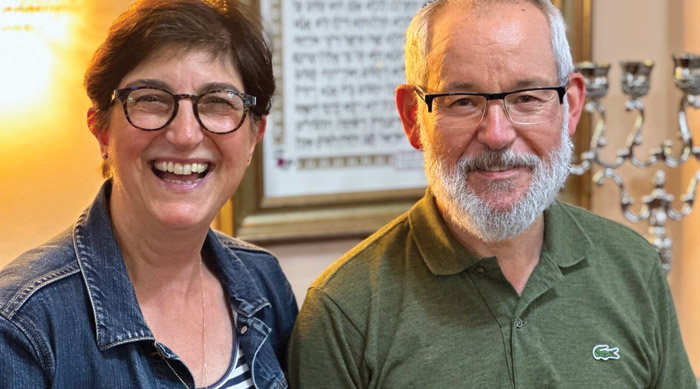

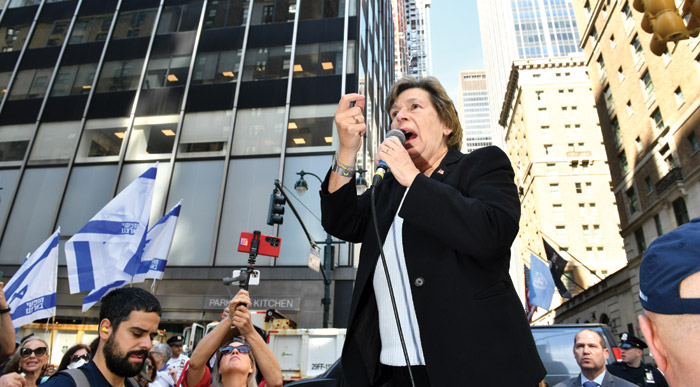
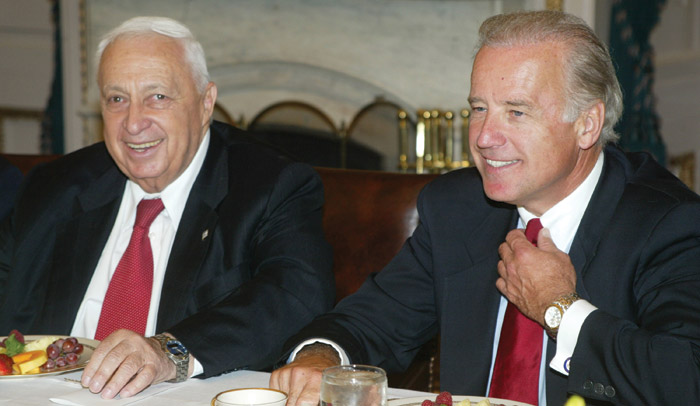
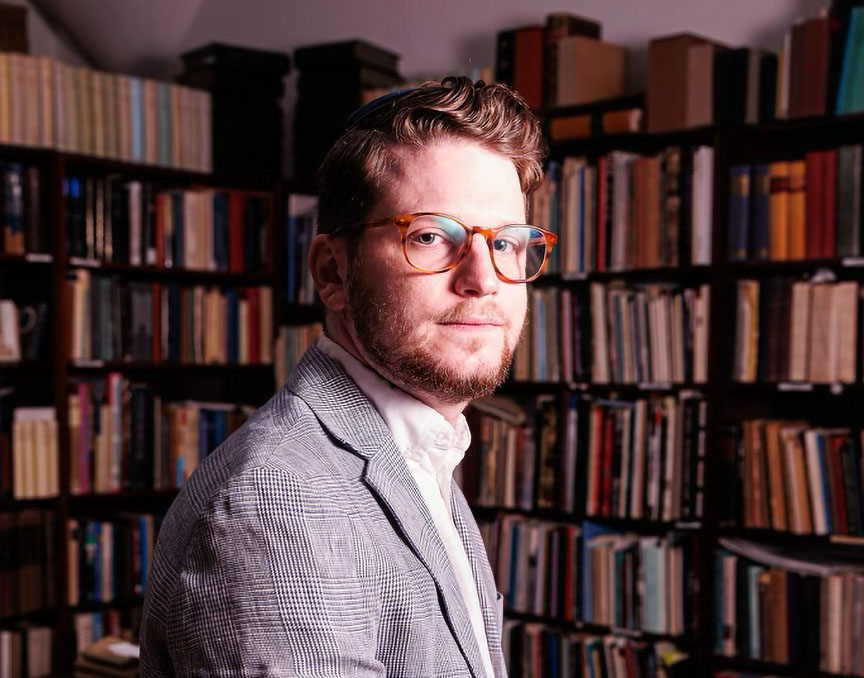



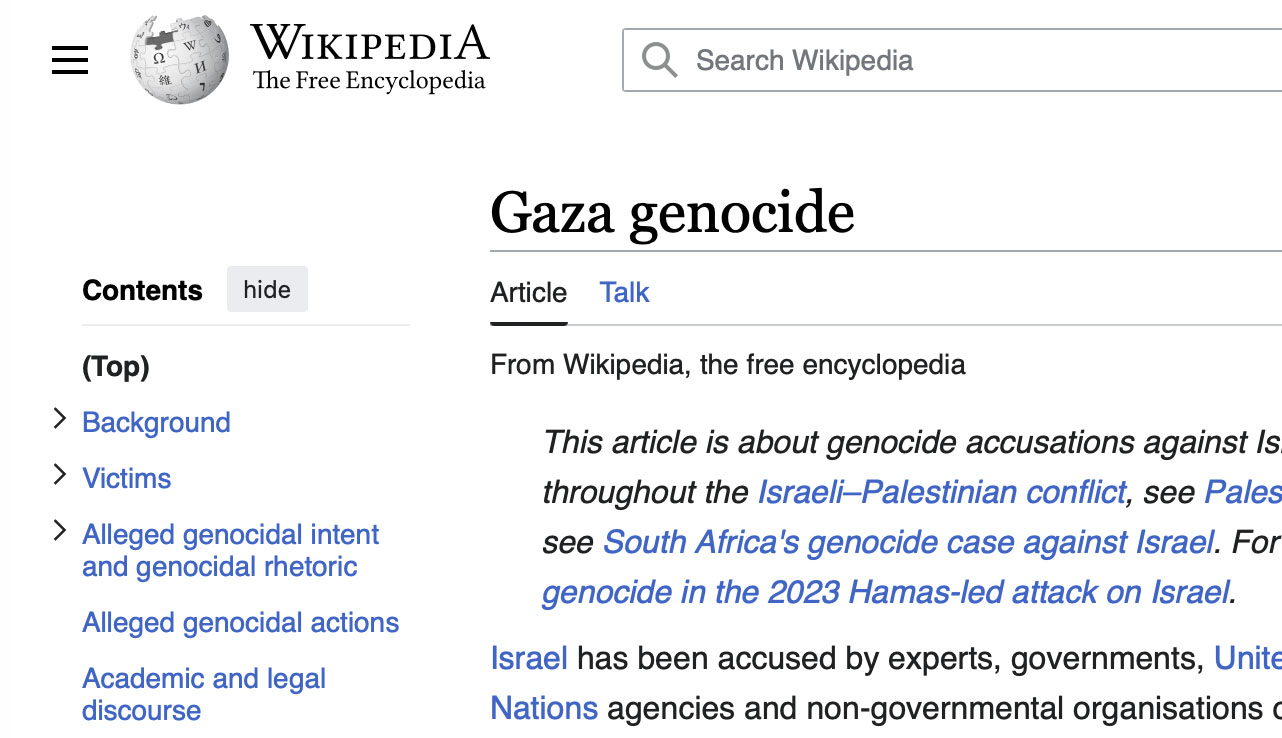



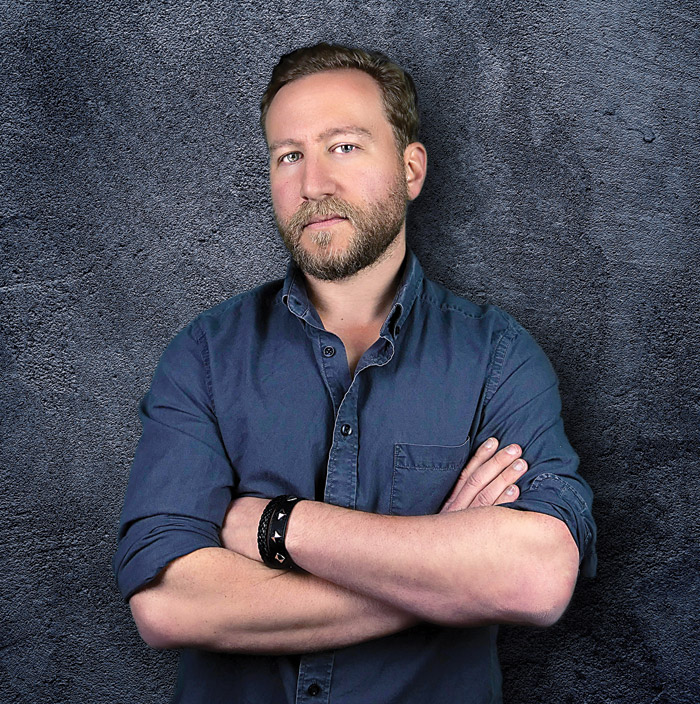

 More news and opinions than at a Shabbat dinner, right in your inbox.
More news and opinions than at a Shabbat dinner, right in your inbox.